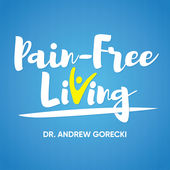
The Misunderstood Nature of Shoulder Pain
For many struggling with shoulder pain, diagnoses like shoulder impingement, rotator cuff tears, and labral tears sound all too familiar. These terms often conjure images of long-term pain management, invasive treatments, or even surgery. However, what if these conditions were merely indicators of a deeper issue, rather than the root cause of your shoulder pain? It’s a perspective that might not only surprise you but also open the door to a more effective, less invasive path to recovery.
When diagnosing shoulder pain, medical professionals frequently identify one of three conditions:
- Impingement Syndrome: Characterized by pain at the front and top of the shoulder due to a narrowing of space within the joint.
- Rotator Cuff Tears: These occur when one of the rotator cuff muscles is torn, leading to pain and inflammation.
- Labral Tears: This involves tearing of the cartilage ring around the shoulder socket, resulting in pain, clicking, and popping sensations.
While these conditions are indeed painful and disruptive, they are often symptoms of a broader issue: musculoskeletal dysfunction within or around the shoulder. The real culprit behind the pain is not the tear or impingement itself but the dysfunction that led to these conditions in the first place.
Uncovering the True Culprits
At the heart of most shoulder pain are three primary dysfunctions:
- Limited Shoulder Blade Mobility: Tight muscles in the upper back can prevent the shoulder's four joints from moving harmoniously, leading to pain and inflammation.
- Insufficient Shoulder Joint Stability: When the muscles surrounding the shoulder joint fail to provide adequate strength and stability, it allows for excessive movement of the humerus, which can cause impingement and inflammation.
- Poor Upper Spine Mobility: The mobility of the upper spine is crucial because the shoulder blade moves along the rib cage, which is connected to the upper spine. Dysfunction in this area can lead to shoulder pain.
A Path to Healing with Superior Physical Therapy
At Superior Physical Therapy, we understand the intricacies of the body’s musculoskeletal system and how dysfunctions within it can lead to shoulder pain. Through comprehensive testing, we can pinpoint the exact dysfunction causing your discomfort. But we don’t stop there; our approach involves treating these dysfunctions with targeted functional movements designed to restore natural body mechanics, promote healing, and alleviate pain.
Rethinking Treatment Options
Before resorting to medications, injections, or surgery, consider the alternative that physical therapy offers. Not only can it address the root cause of your shoulder pain, but it can also equip you with the knowledge and tools needed to maintain your health and avoid future visits to the doctor or hospital.
So, if you’re navigating the challenging waters of shoulder pain, don’t lose hope. An effective and less invasive solution may be within reach. Contact us at Superior Physical Therapy and let us guide you towards a path of recovery that goes beyond symptoms, targeting the real issues at play. Together, we can achieve not just relief, but lasting wellness.
To learn more, attend our FREE Shoulder Pain Workshop. Call 231-941-6541 or visit https://www.thesuperiortherapy.com/shoulderpainrelief to sign up for the next workshop.
If you missed it, watch this three-part video series on the Root Causes of Shoulder Pain: https://youtube.com/playlist?list=PL77YKOSXe8e7BJ5



